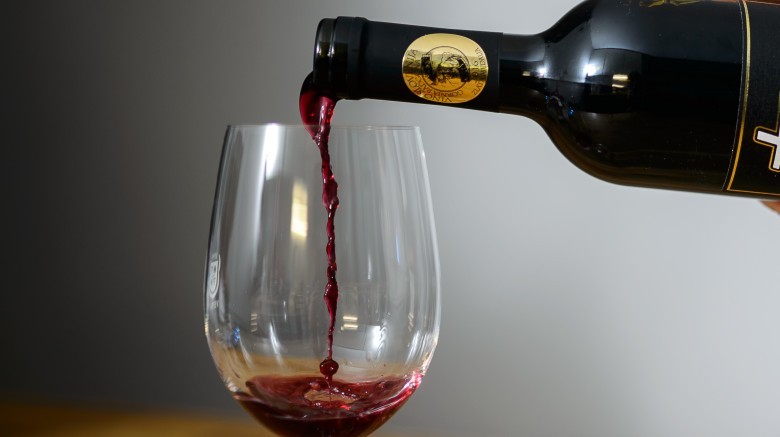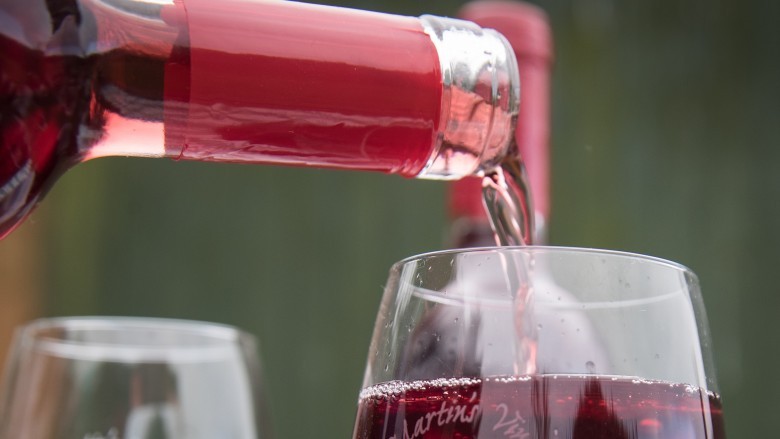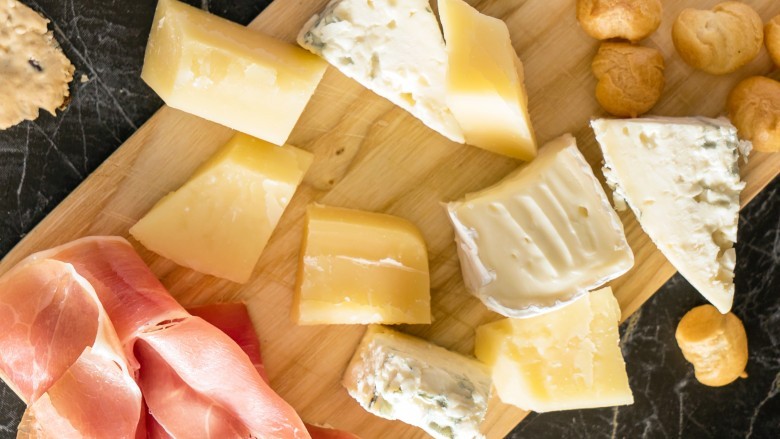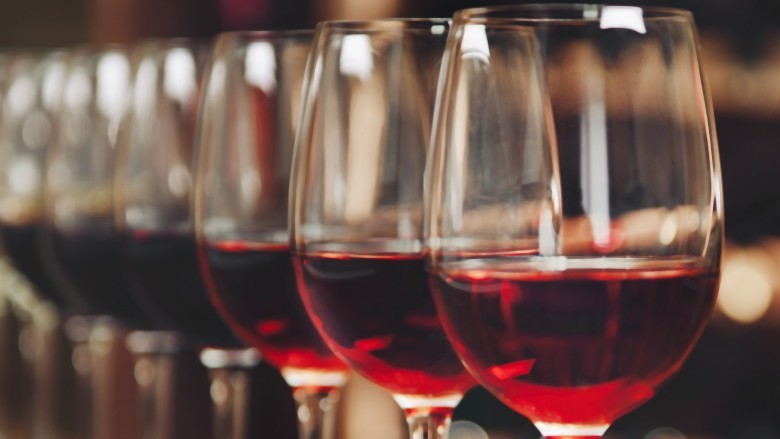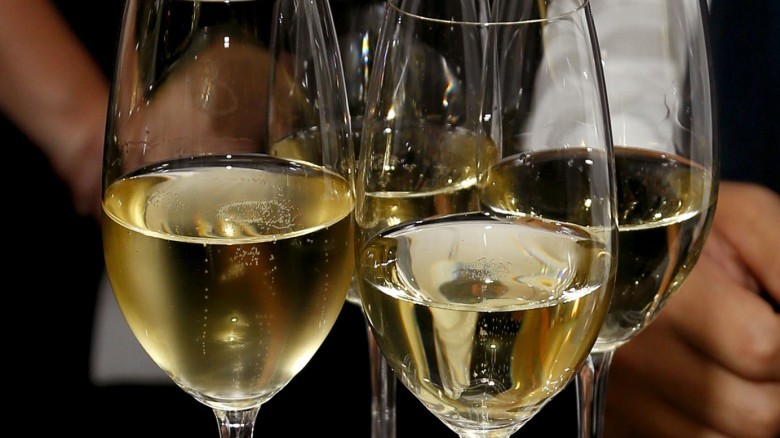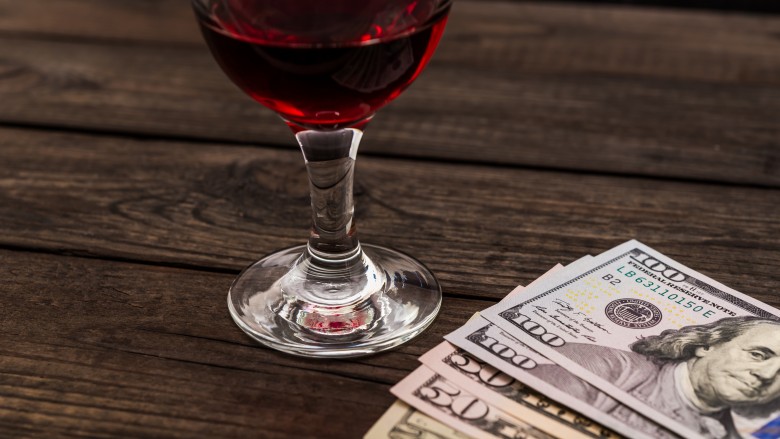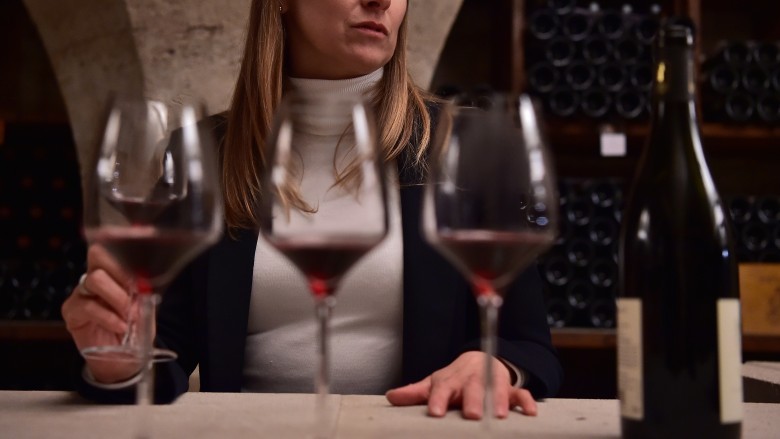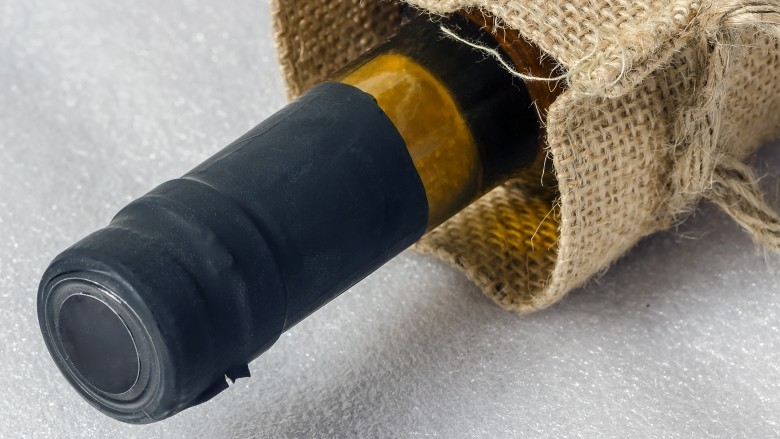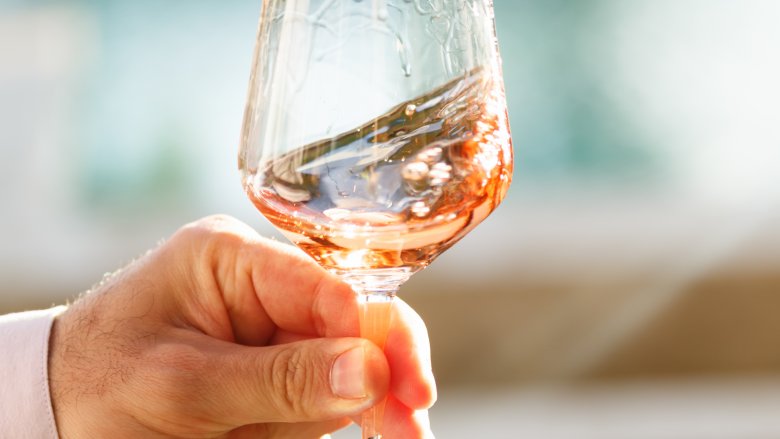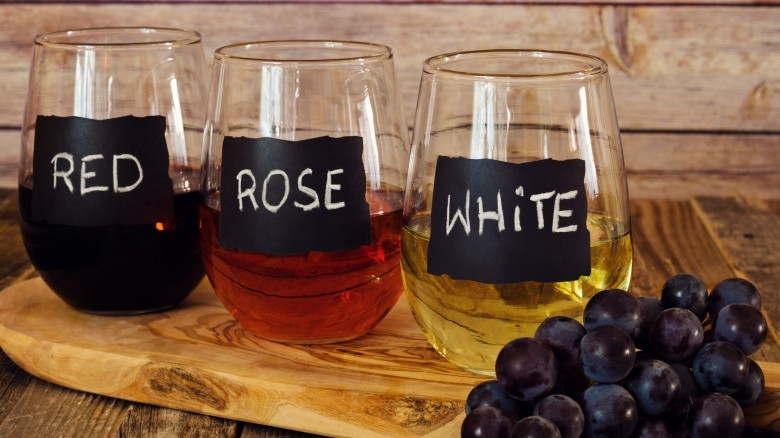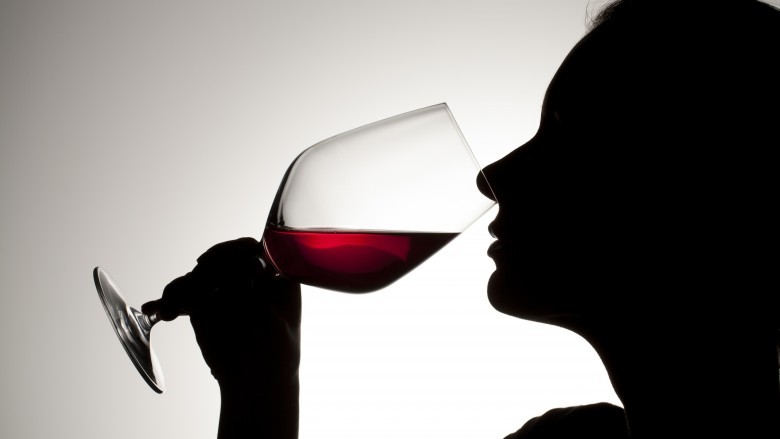How To Order Wine At A Restaurant
-1491932726
Nothing signals the entry into adulthood like drinking wine for pleasure rather than the buzz. But drinking wine for pleasure isn't all fun and games — there's a whole new world you have to learn with rules, new words (some with stress-inducing pronunciations), and proper procedures. And, like everything associated with adulthood, everyone will laugh if you do it wrong. Drinking (and ordering) wine in public can be painful enough to take all the pleasure out of the act if you're not sure what you're doing. Your inability to differentiate sherry from shiraz today might spell doom at a business lunch tomorrow. But how does one navigate a wine list? What's pairing all about? Is the expensive stuff actually tastier, or are the rich just better at self-deception? These questions have plagued wine drinkers since the first grapes got properly moldy. While we can't promise to make sense of why "pencil shavings" is an aroma one would want to drink, we can at least help you impress the beer-drinkers in your life.
Wine basics
Experts insist there are five major varieties of wine: red, white, sparkling, rosé, and fortified. Red wines are produced by leaving the dark skins of grapes present in the wine during fermentation, while white wine uses only the colorless innards. To break these categories down further, check the alcohol content. Anything below 12.5 percent is light bodied, anything above 13.5 percent is full-bodied, and anything in between is medium-bodied.
Rosé wine is produced by removing dark grape skins early on in the process, and sparkling wines incorporate a wide variety of secondary fermentation processes to impart a zippy carbonation. While most people are familiar with white sparkling wines, sparkling red and rosé wines are available. Fortified wines are a blend of wine and spirits, resulting in a higher than normal alcohol content, like sherry or vermouth.
Intro to pairing wines
Because there are so many varieties of wine, and so much variance within styles, food pairings can get cripplingly specific.
Before worrying yourself over red or white, understand that the largest component of a wine's body comes from sugar and alcohol content, rather than its color. There are light reds, just as there are bold whites, so know what you'll be eating before ordering wine.
Pair a heavy meal with a heavy wine, grilled sausage is an excellent accompaniment to either Syrah or Moscato. Dairy fats, either in cheese or cream sauce form, make a natural pair with white wine, but timid whites will absolutely be bowled over by assertive cheeses.
Sparkling wines, given their effervescence, may lack the body to go toe-to-toe with a rare steak, but make an excellent partner for fish.
The goal of a pairing is not just to find a drink and meal that taste good together, but to discover a perfect pairing, a combination of elements that work to create a third, completely new taste sensation on their own. Cabernet and black pepper steak is a good starting point, if you don't have any champagne and caviar handy.
Wine-by-the-glass doesn't have to be a ripoff
Here's the central problem with by-the-glass pricing: One bottle of wine holds four or five servings, depending on how much you like your friends. If a restaurant spends $14 on one bottle of wine, and charges $9 for one glass while the rest goes to waste, the restaurant is down by not just the $5 difference, but the profits on the unsold glasses as well. Well-run establishments will use partial bottles to educate their staff, other businesses might re-sell a table's unfinished bottle by the glass. Granted, that would never happen at your favorite restaurant, but consider investigating your state's carry-home liquor laws.
On the other hand, why risk committing to a full bottle of something the table might not like? A glass is an excellent way to sample new vintages and expand your palette. Indulge in a glass of something unusual, if it doesn't pan out you won't have a whole bottle to dispose of. Take risks, predictability is for people who don't wait 10 years for grape juice to get ready for a night out. You drink wine now, my friend.
Is house wine worth it?
House wines may have a notorious reputation among people who only drink wine on the weekend, but many industry pros swear by them.
While it's often the fact that the house is one of the more affordable options on the list, in restaurants of good repute, the house wine is one that pairs well with the majority of dishes. In a steakhouse, that might mean a hearty red, one that can stand up to a rich cut of meat. In an Italian restaurant, the house white is likely one that pairs well with cream sauces. House wines can act as an introduction to the interplay of food and wine, but don't let that fool you into thinking house wines come with training wheels.
If you find yourself in a venue that doesn't know much about wine, you're better off sticking to what the house does know. Try the beer if you're in a beer garden. Don't be the maniac who goes for the pizza at the Chinese buffet, you know better than that.
How to avoid costly mistakes
With the rising cost of food and labor, many restaurateurs seek to squeeze profit from their drink menu. While we mean no disrespect to the hardworking professionals that keep us fed, there are a few expensive pitfalls you'll want to avoid.
First, avoid the "Second bottle paradox." Many diners, when presented with an overwhelming number of choices, will choose the second cheapest item on the list, in order to avoid looking cheap. Expecting this, many restaurateurs use this to their advantage, marking up otherwise unremarkable vintages as much as 400 percent.
Secondly, avoid the "Chardonnay tax." Since it's so popular, restaurants know people will pay more. It pays to have an adventurous palette, and wine without adventure is just bad grape juice.
Finally, avoid celebrity-branded wines. The Coppolla winery succeeded because the Coppolla family invested heavily in it, mediocre sparkling wine won't magically become champagne just because Jimmy Fallon is making bedroom eyes at you from the label.
How to read the list
Restaurants that specialize in wine will often list a bottle's specific bin number on the left-hand side of the list, making it easy to differentiate between multiple vintages of the same style. If the bin is unlisted, the first name in a wine's description is likely the winemaker, followed by the vineyard, followed by the style, vintage, and region grown. If a wine's grape variety is spelled with a capital letter, it indicates that only this variety of grape was used in production.
For an example, "shafer one point five cabernet sauvignon '09, napa" was made by Shafer at the One Point Five vineyard. Cabernet Sauvignon is a popular high-gravity red, this example was produced in 2009 from the Napa Valley.
How to spot a likely bargain
What passes for a bargain in New York would be highway robbery in any liveable city. Likewise, bargain wines from the Napa Valley could command top dollar in a Boston trattoria. While there are never any sure things in art and food service, there are a handful of lesser-known regions which can always be counted on to deliver something delightfully affordable.
Portugese wines kept sailors, adventurers, and colonists afloat long enough to skip over the horizon, but have recently been overshadowed by developments in Australian viticulture. Whites from Alentejo and reds from Douro represent two lesser-known favorites from these storied vineyards, which work well with meat and rice dishes.
Dating back even further, Grecian wine birthed democracy and naval warfare. Both are honored in the Assyrikto grapes of Santorini island, grown in the shape of a laurel wreath in order to shield the fruit from the merciless sun. Assyrikto grapes produce full-bodied white wines acidic and alcoholic enough to age well, so remember that name.
If you're seeking something that can compete with Cabernet Sauvignon for sheer drinkability, try wine made with Sicily's Nero d'Avola grapes, the most planted red grape on the island. With a similar body and taste to sauv, you can replicate the experience without the helpful markup.
How to swirl and clink with your friends
When the wine arrives, you may be tempted to dive right in, but take a moment to appreciate the wine before you do. Fluid scientists have discovered the ideal swirl technique for perfectly aerating your glass. As the wine runs down the inside of the glass watch for "legs," rivulets forming channels via the magic of fluid tension. A high viscosity is indicative of a high gravity wine, heavy with with alcohol and sugar. For a more thorough explanation as to the exact witchery at play, ask NASA. They spent taxpayer money getting astronauts potted in the pursuit of scientific enlightenment. We can't imagine having the spins is improved by measuring one's rotational velocity, but that's why they're in space and I'm drinking an entire bag of zinfandel, crying, in the shower.
After everyone has been served a drink, of course you'll want to raise a toast. When you do, strike the glass as if it were a bell. A clapper doesn't strike the rim of the bell, but the middle, most resonant part. This method is much less likely to shatter anything, especially if it's not the first glass of the night.
Notes on tasting
The best way to develop a palette is drink a lot of many different kinds of wine. You're welcome!
As you drink, you'll begin to notice that every taste of wine is really an interplay of multiple distinct experiences, with both aroma and flavor. After visually inspecting the wine, take a deep breath. Get your nose as deep into the cup as you can. Don't hold back when you smell, give it a solid swirl or two if it hasn't decanted long enough. Now is not the time for half-measures, lean in.
Primary aromas come from the grapes, and smell fruity or herbal. Secondary aromas stem from the wine making process itself, and may be yeasty or cheesy. Tertiary aromas come from the aging process, producing such complex smells as pencil box or old leather.
When it comes to mouthfeel, let the wine sit on your tongue. Swishing is appropriate, gargling will elicit stares. Does the wine cling to the inside of your mouth, like a syrup, or is it a thin fluid collecting around your molars? Does it fizz? "Do you like it?" Is a great question in theory, but expensive wines are to be experienced, not enjoyed.
How to check if the wine you were served is bad
When ordering a full bottle of wine, you may notice the server presenting you with the cork. This serves multiple purposes, to ensure that the label on the cork matches the label on the bottle, to check if wine seeped past the cork in storage, and to inspect for signs of rot. A glance will be more than enough to let you know if something's gone wrong, while it was once common to gently bite the cork to test for rot, it was also once common to wear socks with sandals. What do you expect to learn from biting a cork? Nothing. You'll end up with a mouthful of broken, rotten cork, and your server will still hate you.
Visually inspect the wine for cloudy sediment or bits of detritus by holding it up to the light and swishing. Natural corked bottles have a higher taint rate than artificial corks or screw-top bottles, so if you are one of the many who look down on eco-friendly screw-tops as cheap, take heed: corked wine smells like wet cardboard. You wouldn't need to know that if you embraced alternate closures.
You'll also want to avoid any wines that smell of matchsticks, as a nose-prickling rotten egg aroma indicates an overzealous amount of sulfites were added, to prevent oxidization. Oxygen turns wine into vinegar, making it one of the bigger risks of ordering wine by the glass, so don't drink the wine if it tastes like it could clean the sink.
